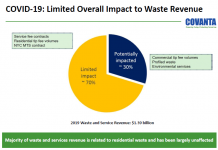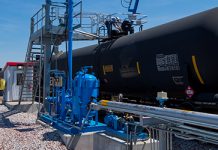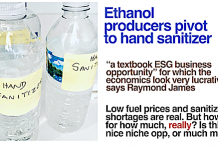Jim Lane
 The US passed a dubious and historic milestone this week. The tax rate on E85 renewable fuels now exceeds 100% in some formulations. By comparison, the tax rate on E10 renewable fuel is running at an estimated 41% and the tax rate on straight gasoline is running at an estimated 35%.
The US passed a dubious and historic milestone this week. The tax rate on E85 renewable fuels now exceeds 100% in some formulations. By comparison, the tax rate on E10 renewable fuel is running at an estimated 41% and the tax rate on straight gasoline is running at an estimated 35%.
As Shakespeare observed in Measure by Measure, “some rise by sin, and some by virtue fall”.
Now, the idea of a carbon tax is that governments are supposed to collect more tax against high-carbon fuels. Yet, policy in practice works the other way. The less carbon you consume, the higher percentage tax you pay.
In fact, it gets worse, seen another way.
Because E85 has roughly 28% lower fuel economy than straight gasoline, the average person would use 20% more gallons driving on E85 in order to get to a given destination, compared to using straight gasoline. Yet, the taxes are applied not on a cents-per-mile basis, or a gallons of gasoline equivalent (as is the case for compressed natural gas) they are applied on a gallon basis. So, not only does E85 suffer pay 100% tax rates compared to 35% for straight gasoline; drivers have to pay 28% more tax in driving the same miles.
How it works, the “taxing virtue as sin” system
Let’s look at how the US, state and local governments work together to hike the price of E85 renewable fuels through tax policy adds cost to lower-carbon fuels, and takes away the price incentive to switch to lower-carbon fuels.
First, let’s look at E85, E10 and gasoline prices as reported this week by the Iowa Renewable Fuels Association.
The amazing news is that E85 fuel is available on a wholesale basis for 55 cents per gallon from The Andersons. Absolute Energy is not far behind, at $0.60 per gallon .On a wholesale mile-for-mile energy cost (BTU) basis, E85 is less expensive now than either straight gasoline or CNG (compressed natural gas), despite the collapse in oil & gas prices over the past 18 months.
In fact, E85 on a wholesale basis is up to 51% less expensive on a mile-for-mile basis, compared to gasoline. Here’s the hard data on that.
So, why aren’t E85 sales skyrocketing?
Partly due to there being 15 million flex-fuel vehicles on the road out of 300 million registered vehicles. Partly due to there being 3200 E85 outlets out of about 130,000 places to buy road fuel.
But that’s not the complete story. Some of it is contained in the retail discount to gasoline, as opposed to the wholesale discount.
Let’s look at that:
Here’s the retail comparison.

Here’s the wholesale.

How did a lower-carbon fuel that was 51% cheaper at wholesale become only 5% cheaper at retail?
In a word, taxes.
Here’s a breakdown of the fuel taxes imposed in California, as reported at CA.gov for branded gasoline. Note that wholesale costs have changed since CA.gov ran the numbers, but the taxes are imposed on a gallon basis not a price basis, and remain the same.

Your eyes can quickly do the math that there’s something like $0.56 in taxes per gallon, which means that E85 customers pay $0.78 in taxes per gasoline-gallon equivalent (GGE). And that means that, as fuel prices drop and the tax component (which is fixed) becomes a bigger part of the cost of fuel, it becomes almost impossible for renewable fuels to beat out gasoline on price, entirely due to tax policy.
The rapacious mark-ups in E85
Boy, are fuel marketers making out like bandits with E85. The mark-up from wholesale to retail, even after subtracting taxes, is 107%. Margins that even high-end brand marketers would be delighted with.



By comparison, gasoline is a tougher business. The mark-up from wholesale to retail is 22%, while CNG’s mark-up is 31%.
If you concluded that the overall impact of national E85 policy is to disincentive E85 through high taxes, and offer massive margins to the value chain (while denying value to the corn farmer, the E85 refiner, or the end-user), you would find real support in the hard data.
Solution, anyone?
The solution is not too hard, from a tax POV. Simply do what is done with Compressed Natural Gas and tax everything on a GGE (gasoline gallon equivalent) basis.
At the end of the day, it’s revenue-neutral renewable fuel patrons would end up paying the same taxes as the patrons of gasoline on a mile-for-mile basis. But it removes an unfair burden that will stymie the adoption of high-blend renewable fuels by consumers.
From a wholesaling perspective, gas stations mostly sell gasoline (in terms of fuel), so 22% overall margins must be generally acceptable. Which suggests that someone could be buying E85 at $0.55 from The Andersons, and marking it up to $1.23 to provide the same margin as gasoline and pay for all those taxes. Even with the lower fuel economy, that would be a 31% discount to straight gasoline, and that would be a tasty incentive to switch to low-carbon fuels.
Jim Lane is editor and publisher of Biofuels Digest where this article was originally published. Biofuels Digest is the most widely read Biofuels daily read by 14,000+ organizations. Subscribe here.









